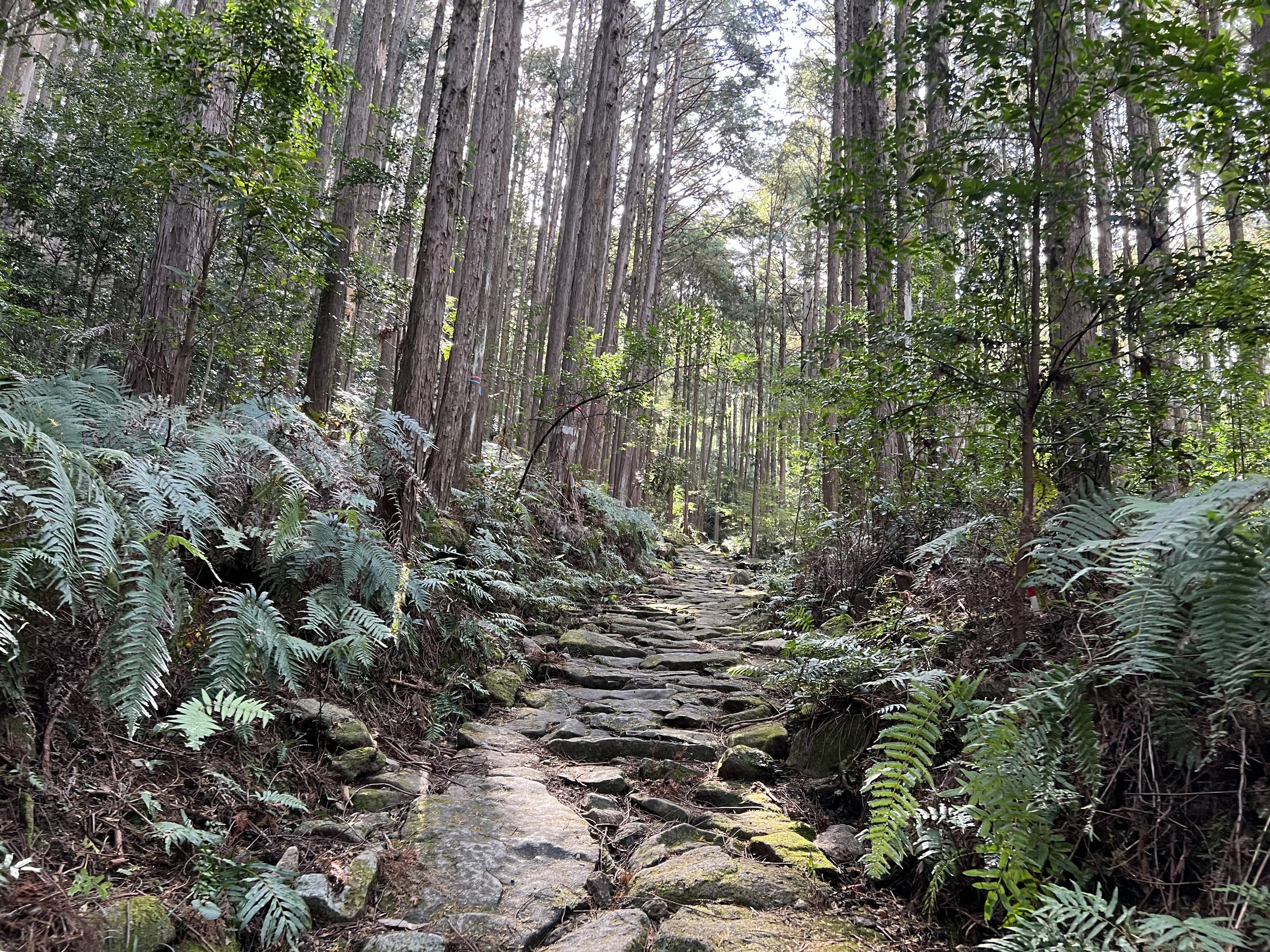Yamadera Hike Guide: Visit Tohoku’s Sacred Mountain Temple
After sharing two fantastic hikes along the Nakasendo Trail, I’d love to introduce another favorite hike of mine in Japan: the climb to Yamadera (山寺), a mountainside temple in Yamagata Prefecture that I did as a half-day trip from Sendai. This trail winds through a forested and steep slope and leads to a historic temple complex perched on the cliffs, offering panoramic views and a deeply serene, spiritual atmosphere. If you’re planning to explore the Tohoku region, I can't recommend Yamadera highly enough!
In this guide, I’ll take you through the hike and share tips from my experience, hoping they will help you plan your visit.
Why You Should Add Yamadera to Your Japan Bucket List
Yamadera, which literally means “Mountain Temple,” is officially known as Risshaku-ji (立石寺) and is among the most atmospheric temples I’ve visited in Japan. Founded in 860 by Jikaku Daishi, a Buddhist priest of the Tendai sect, it’s impressive to think that this sacred site has welcomed pilgrims for over a thousand years! The climb, which is over 1,000 stone steps, winds through a tranquil forest and rewards you with breathtaking views of the valley below.
Designated both a National Historic Site and a Place of Scenic Beauty, Yamadera is a destination worth visiting in any season. I went there in May, when the temple was surrounded by lush greenery and wild flowers, and I found the place absolutely enchanting. That said, many find it’s at its most magical in autumn when the leaves in the valley turn fiery red, or in winter, when snow covers the steps and rooftops.
Yamadera also fits perfectly into any Tohoku itinerary, as it's easy to combine with a visit to Sendai or the atmospheric Ginzan Onsen.
How to Get to Yamadera
A great thing about this hike is that it is easily accessible from nearby cities. Yamadera station (山寺駅) is an hour’s train ride from Sendai and 20 minutes from Yamagata city on the JR Senzan Line. And once you’ve reached Yamadera station, it’s just a 10-minute walk to the start of the hike, so it’s very convenient!
Yamadera station
Planning a trip to Tohoku? The JR East Tohoku Area pass is a great option for exploring the Tohoku region by train, as you can take the shinkansen and other JR trains on JR East lines as much as you like for 5 or 10 consecutive days. I used it myself on a trip from Tokyo to Miyagi prefecture and it saved me a lot of money.
Hike Up To Yamadera with Me
Enjoy the Walk Through Yamadera Town
As soon as you exit Yamadera station, you can follow the signs leading you to the Risshaku-ji mountain trail start. I love the atmosphere of countryside towns in Japan, and the 10 min walk on the way was charming. You can appreciate views of the Tachiya River as you cross the red Yamaderahoju Bridge (山寺宝珠橋) and stop off at the souvenir shops to discover local products and grab a snack. What about trying chikara konnyaku (which means “power konjac”), a popular snack to eat before climbing the temple steps? These skewers of konjac flavoured with soy sauce and English mustard are a food specialty unique to Yamagata prefecture.
Chikara konnyaku in Yamadera
On your way, make sure to stop at Yamadera Information Center to grab a map of the area (you can also download it from the Yamadera Tourism Association website in Japanese or English).
Stop at Konponchudo Hall, an Important Cultural Property
The first temple you’ll encounter as part of Yamadera is the Konponchudo Hall (立石寺 根本中堂), designated as an Important Cultural Property as Japan’s oldest beech wood structure.
Continuing on your left, you will pass the statues of the famous poet Matsuo Basho and his pupil Kawai Sora. Indeed, Yamadera is known to have been visited by Basho and to have inspired a famous haiku that he wrote during his visit: “In the stillness, the cries of citaras, penetrate the rocks”. If you’re interested in Basho, you might want to visit the Yamadera Basho Memorial Museum (山寺芭蕉記念館) in Yamadera after your hike.
The statues of Matsuo Basho and Kawai Sora
A little further on is the temple gate, next to which is a small ticket office where you will have to pay an entrance fee of ¥500 to access the mountain. Opening hours are from 8am to 4pm from April to September and from 8:30am to 3pm (closing time 4pm).
An Intense but Rewarding Climb All the Way to Okunoin
Time to climb the 1,015 stone steps of Yamadera! Because there are many sights along the way, such as statues and small monuments, it’s the perfect excuse to take plenty of breaks along the way, so I didn’t find the climb too difficult.
I didn’t know about it at the time, but for instance, you’ll pass by a mound called Semizuka (せみ塚) where Basho's poem is buried.
A spot that I found particularly intriguing was Midahora (弥陀洞), a rocky area carved naturally by rain and wind located under the Niomon gate. It’s said that those who can see the image of Amida Nyorai Buddha on the rock will be blessed with good luck.
Midahora Rock
Next, the beautiful Niomon Gate, made of zelkova wood, marks the entrance to the mountaintop temples, starting with Kanmyoin (観明院) and Shouzouin (性相院). If like me, you like collecting goshuin in Japan, make sure to stop at one of the temples to get a stamp to commemorate your visit.
Niomon Gate
Yamadera letterbox
Next to the final ascent to the inner sanctuary Okunoin (如法堂 奥之院) and the Great Buddha Hall Daibutsuden (大佛殿), I couldn’t help but notice a red letterbox and I was completely amazed at the idea that a postman climbs up to this letterbox 5 days a week. Maybe you’ll want to send a postcard to someone dear from the top of Yamadera?
Once you're at Okunoin, you've reached the highest point of the trail! Congratulations!
Okunoin
Admire the View of the Valley at Godaido Hall
Kaisando and Nokyodo
Next is time to head to the highlights of Yamadera: Kaisando (開山堂), dedicated to Jikaku Daishi, founder of Risshakuji Temple, the small red shrine Nokyodo (納経堂), known as the oldest building of the temple comlex and Godaido (五大堂), where are enshrined the “Five Wisdom Kings”. From Godaido, which looks like a stage, you can admire a breathtaking landscape of Yamadera countryside spreading out. The view was absolutely gorgeous and the highlight of my visit to Yamadera! To reach Godaido, you just need to go up the narrow stairs on the right side of Kaisando.
Godaido
It's time to head back down the mountain, which is quicker than the climb. Once you reach the bottom of the mountain, you can turn right towards Bakkumon Gate (抜苦門) and walk past Honbo Hall (本坊) before heading back into town and to the train station.
Hiking and Travel Tips to Know Before Climbing to Yamadera
Map showing all the temple buildings of Risshaku-ji
Difficulty and Duration of the Hike
The ascension is not difficult and takes about 30-40 minutes to the top depending on your pace and 20-30 minutes for the descent. In total, I spent around 3 hours in Yamadera, 2 hours discovering the Yamadera temple complex at a leisurely pace and under 1 hour exploring the town and sampling the local specialities while waiting for the next train back to Sendai.
What to Wear and Bring
Comfortable walking shoes or light hiking boots are sufficient if you visit Yamadera in spring, summer or autumn. Additional equipment is required as soon as the snow begins to fall and the accumulation of snow on the paths can make walking difficult and the ice slippery. So if you're visiting in winter, you'll need suitable footwear, such as winter hiking boots and possibly crampons, as well as winter clothing.
And don't forget to take cash and coins with you. You'll need them to pay the entrance fee to Yamadera and if you want to make an offering or buy something in one of the temples.
I'd also recommend taking water or other drinks with you, as the vending machines at the top of the mountain are 2 or 3 times more expensive.
Where to Stay Around
I visited Yamadera as a day trip from Sendai (仙台市) and found it very easy. I enjoyed my stay at Hotel Vista Sendai and can recommend it for the great value for the money. The room was clean and comfortable, the public baths were welcome after a day of exploring and the location was convenient near JR Sendai station.
➡️ Look for more accommodation options in Sendai on Booking | Compare prices on Agoda
For an even easier train access to Yamadera (only 20 min), Yamagata city (山形市) is another great option as a base to explore Yamagata prefecture. Based on reviews and for their convenient location near the station, I’d go for Hotel Metropolitan Yamagata or Daiwa Roynet Hotel Yamagata Ekimae.
➡️ Look for more accommodation options in Yamagata city on Booking | Compare prices on Agoda
Alternatively, if you’d prefer a traditional ryokan stay within easy reach of Yamadera (about 40 minutes by train), you might consider staying at Tendo Onsen (天童温泉), an onsen resort located north of Yamagata city with high-quality ryokans offering traditional Japanese hospitality. Many of them feature open-air baths with mountain views and locally inspired kaiseki meals. Based on reviews and photos, Takinoyu Hotel or Hohoemino Kuyufu Tsuruya seem like fantastic options.
➡️ Look for more accommodation options in Tendo Onsen on Booking | Compare prices on Agoda
To Conclude
Hiking up to Yamadera was one of those experiences that stayed with me long after my trip to Tohoku ended. I know I’ll be returning someday in another season to experience its changing beauty all over again.
If you're planning to explore Tohoku, or even just looking for an easy half-day trip from Sendai, I’d recommend to make space for Yamadera on your itinerary. You won’t be disappointed!
Interested in discovering more fantastic hikes in Japan? You can read about all the hikes I’ve done in Japan and written about.
Found this article helpful? Buy me a coffee. 😊
Want to stay in touch? Subscribe to my monthly newsletter (with latest articles, updates, travel tips and more...) delivered straight to your inbox. 📩
Some of the links in this Yamadera Hiking Guide are affiliate links. At no extra cost to you, I may earn a small commission when you click on them and make a purchase. And if you do, thanks for your support! Purchasing through these links is a great way to support Travely Notes, as this helps with the costs of running my blog.






















